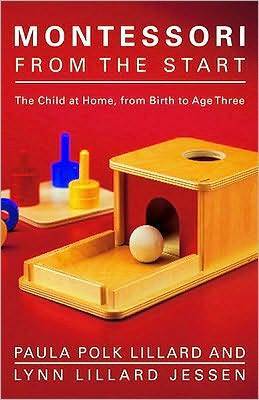More on this book
Community
Kindle Notes & Highlights
Read between
September 27 - October 23, 2019
your child is one of those children who always want to control, we would suggest that, from the start, you be the one who makes the selection.
it is a good idea to set aside a designated time for your own daytime reading. During this time it is necessary to make a conscious decision not to respond to the child, unless, of course, he is getting himself into a dangerous situation.
Just as the primary school children enjoy writing their own stories before they can read books, so do many elementary school children compose their own songs before they can readily read the music written by others.
When your child is two and one-half to three years old, you can have a basket of language cards just with paintings, and teach him their names: Renoir’s Two Girls at the Piano or Child in White, and so forth.
when your child is approximately two and one-half years old and has developed sufficient thumb and forefinger dexterity, you provide a tray with one colored pencil and a small piece of white paper for drawing.
is essential to avoid the vast number of structured “art” materials and projects
because these do not require the same effort as creating their own ideas for expression through art activities.
love them by giving them things. In fact such practice, in and of itself, may send them the wrong message. Children may conclude that if people give you things, they love you.
If receiving things tells you that you are loved, the next logical step is to measure self-worth by what you have, not by what you are.
We want any object that we give to the child under the age of three for independent play to enhance our ultimate goal: connection with others and an understanding of his world.
We take away the opportunity for children to create for themselves when we give them confining toys and activities. What we have done in our culture is replace
Even after the child is in elementary school, one or two scheduled activities a week are sufficient.
More than this leaves the child no time of his own for reflection and imaginative thought.
It is not until the child is eighteen months old, however, that frontal-lobe formation in her brain makes possible significant control and awareness of self and action. For the first time she is capable of inhibition in a variety of behaviors.
It means that the child under six years old has no true understanding of why a certain behavior is inappropriate. Parents cannot give abstract reasons for self-control to their child and expect that she will comprehend them. Instead of reasoning with their child under six years old, parents have to rely on other strategies—specifically, outer control and consequences.
Children who are allowed to manipulate their parents learn to spend their energy and developing intelligence in this manner.
the adult’s role is to “teach children limits with love or the world will teach them without it.”
Because they still forget easily, a sensorial distraction usually suffices to refocus their attention.
If your child crawls or walks rapidly away from you, try not to swoop her up from behind into your arms. Instead, go around in front of her and stop her motion by facing her. You are then able to redirect her energies in a decisive and, at the same time, respectful manner.
Redirect her behavior every single time that that behavior is inappropriate. Do
The problem for the adult is that the child now not only holds an idea of an object in her mind, she can continue to think about it—and she can continue to think about it for some time.
We need to help the child refocus herself by substituting diversion of thought for diversion of object. Because she can now remember her thoughts, our new strategy must be to help her to think about something else.
We can give the child a choice of activities or objects, and we can use description to focus the child on what is in front of her.
the essential point is to allow no combativeness in tone during such an encounter. If we add a challenging note to our voices, an emotional response is touched off in the child and overwhelms whatever willpower she has managed to develop.
From twelve to eighteen months old, the child understands but cannot carry through without a good deal of adult help. From eighteen months to three years old, she can understand the adult’s request and can sometimes obey without help. At about three years old, the child reaches the level of development where she can consistently obey, but may still choose not to.
The child often exhibits fussiness, irritability, and discomfort in the process of making this decision. Our goal is not to eliminate this struggle from the child’s life. It is to keep this struggle manageable.
one adult for two children under twelve months, one for three children under eighteen months, and one for six children if the children are nearly evenly spaced between eighteen months and three years.)
Look, then think: “What is the one thing that I want to do to help?” Your aim is to give the least amount of help necessary and to give it at just the right moment.


